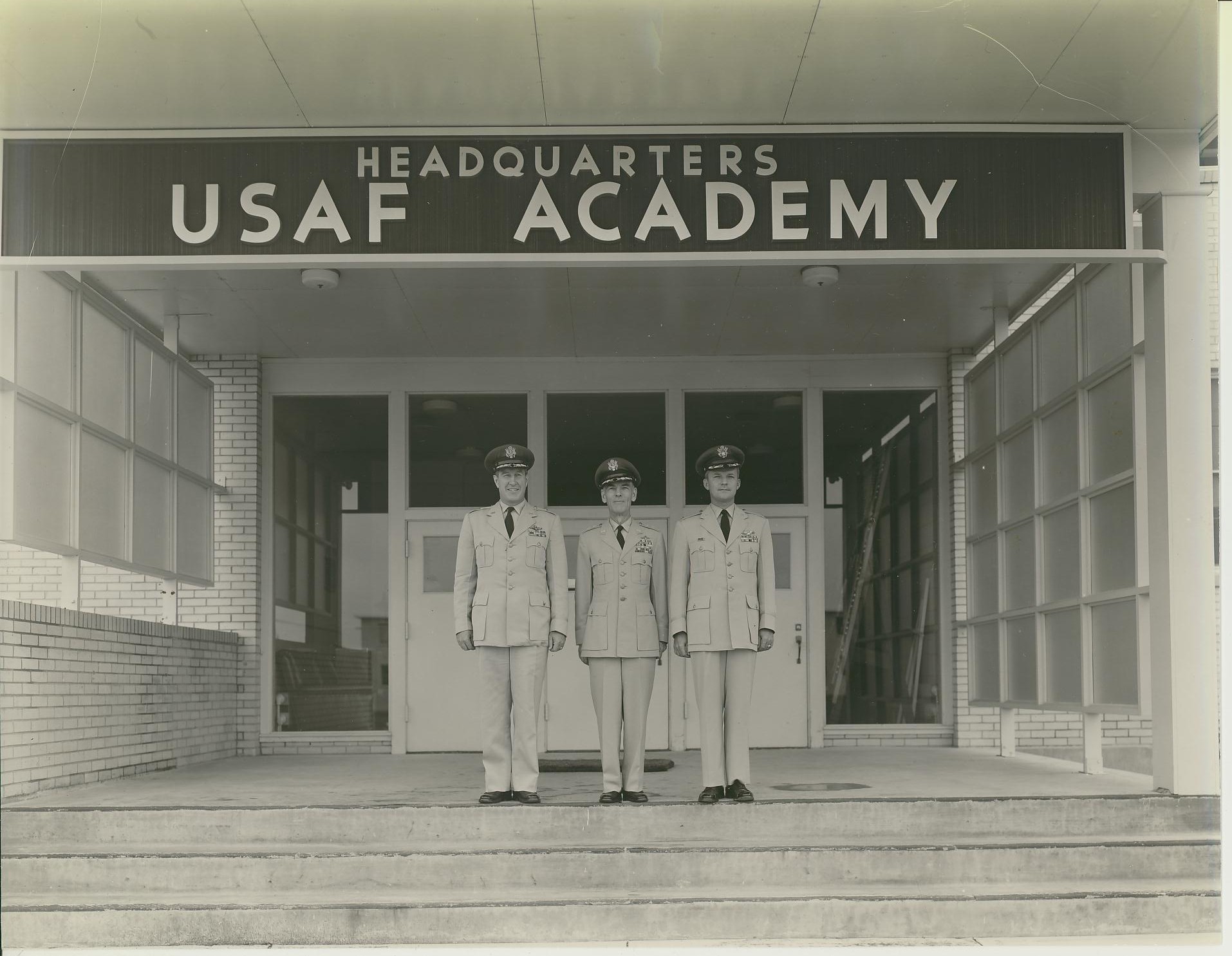
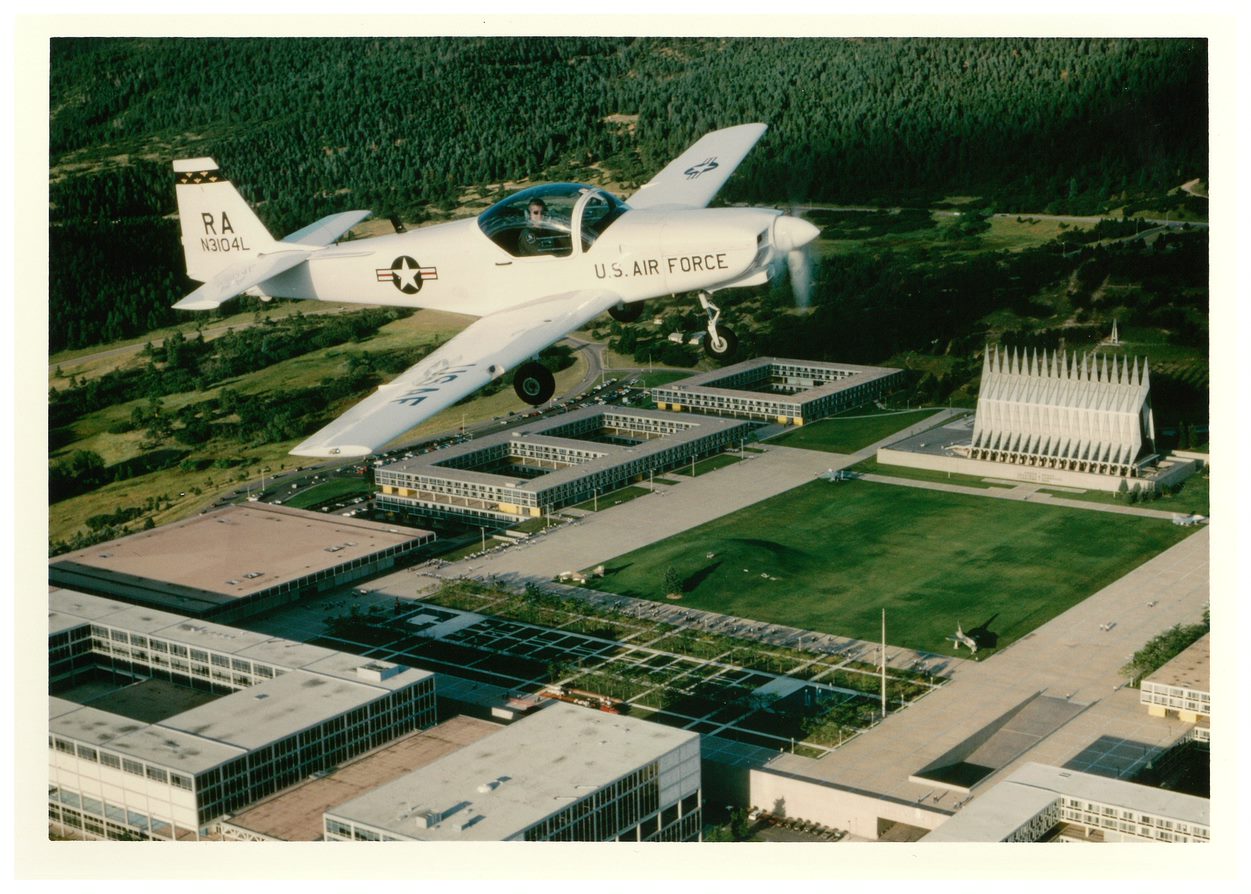

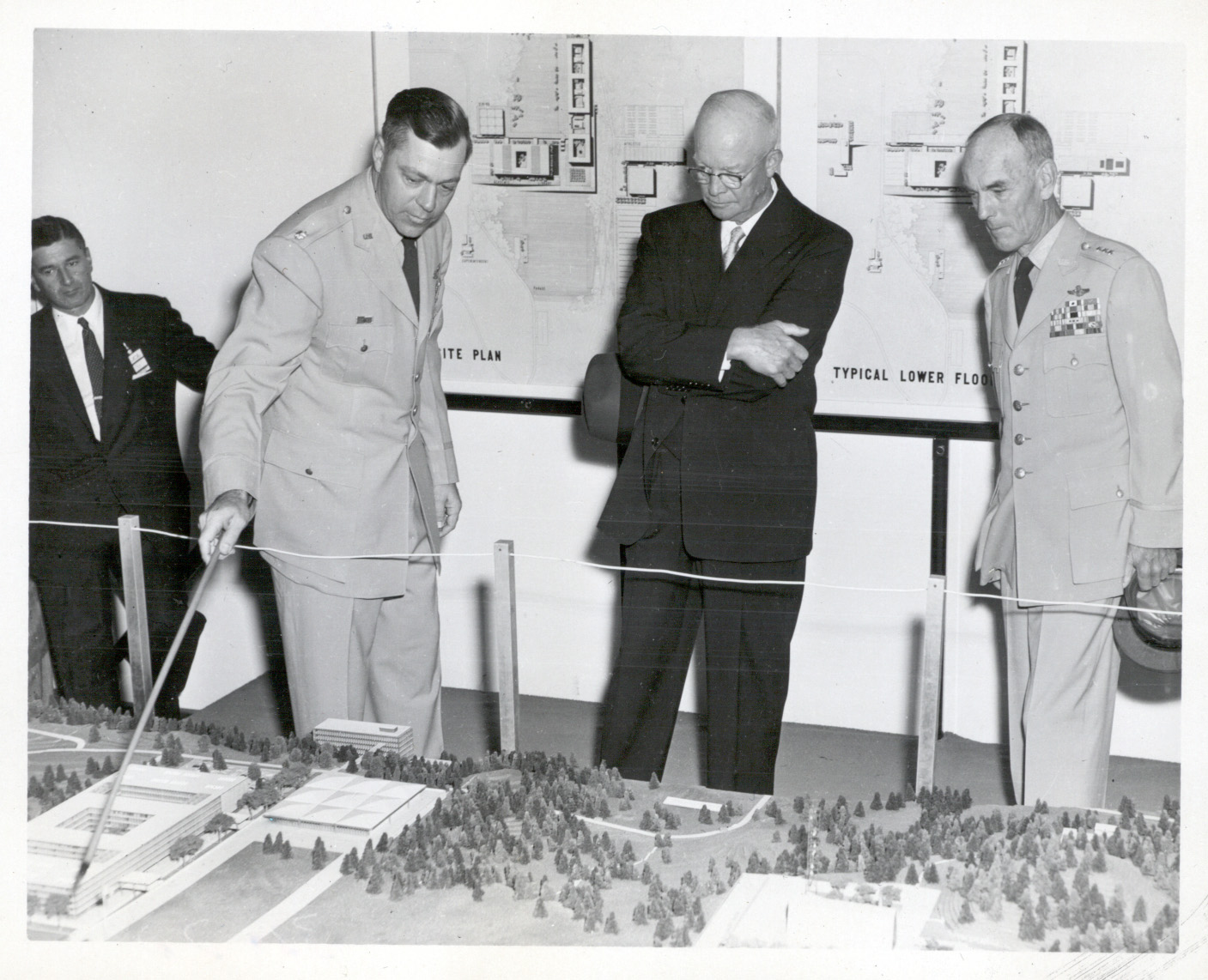
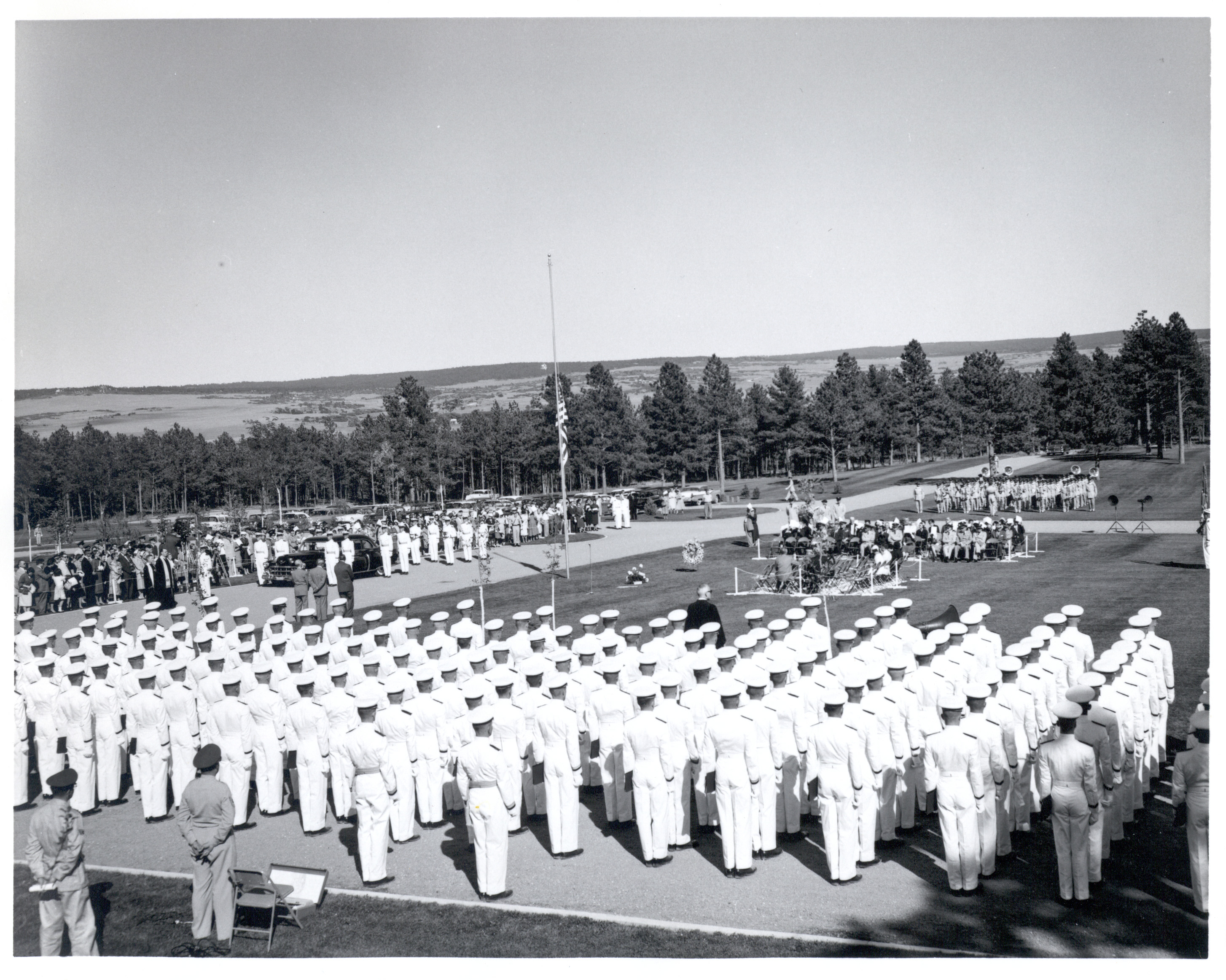
Air Force Academy Dedication Day.
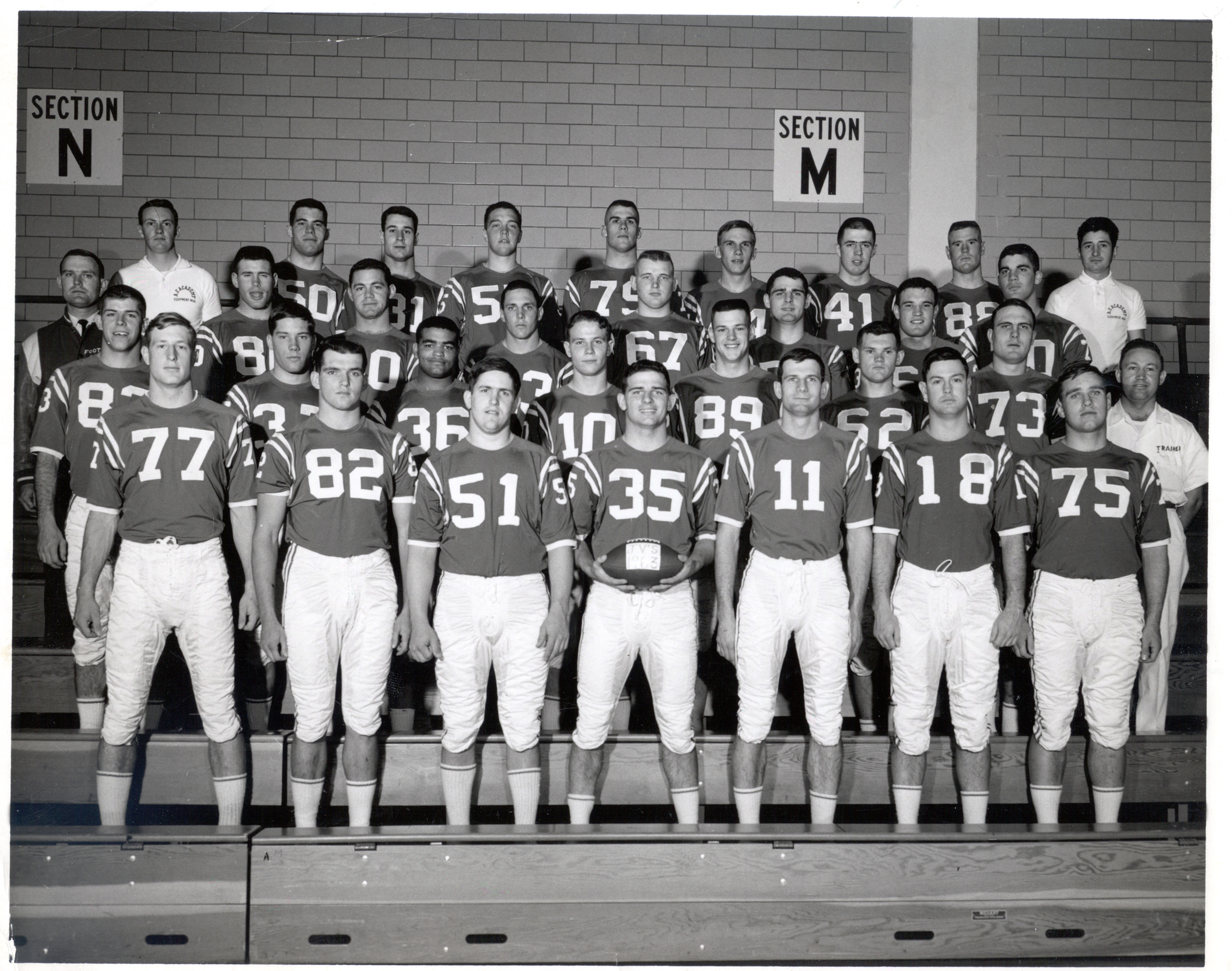
Photograph of the Air Force Academy Football Team. Lance Sijan was wearing jersey number 82.
The first 306 Air Force Academy cadets were sworn in on July 11, 1955. These first cadets began their training at a temporary facility at Lowry Air Force Base in Denver in anticipation of the completion of a permanent site near Colorado Springs in 1958. A Site Selection Commission comprised of both military officers and civilians received proposals from 580 sites in 45 states, of which they visited sixty-seven either in person or from the air. Several factors influenced the commission’s decision to bring the Academy to Colorado including the availability of land for future expansion, the enthusiastic response of local and state legislatures, and the support of famous aviator Charles Lindbergh, who performed several test flights in the area. The nation’s growing reliance on air power during the Cold War years highlighted the need for more Air Force officers, so the Air Force Academy’s cadet strength was expanded from 2,529 to 4,417 in 1964 to match the strength of the Naval Academy.
The Vietnam War was the first war in which Academy graduates fought and died. Capt. Lance P. Sijan, Class of 1965, was severely injured when his F-4 exploded on a bombing run November 9, 1967. He managed to evade capture for 45 days despite a fractured skull, mangled right hand, and a compound fracture of his left leg. He died a prisoner of war on January 22, 1968 and became the first Academy graduate to be awarded the Medal of Honor. Sijan Hall was named in his memory.
On June 28, 1976, under the direction of Academy Superintendent Lt. Gen. James R. Allen, the first group of 157 women joined the Cadet Wing. Ninety-seven of the original female cadets completed the program and graduated on May 28, 1980.
Space was part of the Academy curriculum, even from the beginning. The school offered a major in astronautical engineering as early as 1965—one of the few accredited undergraduate astronautics programs in the nation. Col. Karol Bobko, Class of 1959, was the first graduate in space, piloting the space shuttle Challenger in April 1983. To date, 39 Academy graduates have become astronauts for NASA, producing the second highest number of astronauts next to the Naval Academy.
More recently, the Academy’s focus has shifted towards cyber security and remotely piloted aircraft (RPA). For the Air Force, use of RPAs is a vital mission set that delivers air support to combatant commanders throughout the world. The Academy brought RPAs into the airmanship curriculum and graduated the first 24 cadets in February 2010. These less familiar aircraft in the Air Force’s fleet include the MQ-9 Reaper, RQ-1 Predator and RQ-4 Global Hawk.
Our Collections
MS 32-Caine Tonneson, Ginny (First class of women cadets)
SMS 987-Hennrikus, George F., Jr. (Academy Construction)
SMS 1371-Tudor, William D. (Academy Construction)
Academy Photograph Collections-Women Air Training Officers
External Resources
"The appearance of hyperlinks on this web site along with the views and opinions of authors, products or services contained therein does not constitute endorsement by the U.S. Government, DoD, USAF, or USAFA. These sites are used solely for authorized activities and information that supports the organization's mission. The U.S. Air Force and the Air Force Academy do not exercise any editorial control over the information you may find at these link locations. Such links are provided consistent with the stated purpose of this DoD Web Site."
U.S. Air Force Academy, USAFA, CO 80840, (719) 333-2590 DSN: 333-2590, Updated 8 Apr 2018
Privacy & Security Notice /
External Link Disclaimer /
Contact USAFA Webmaster /
Accessibility Section 508/
FOIA